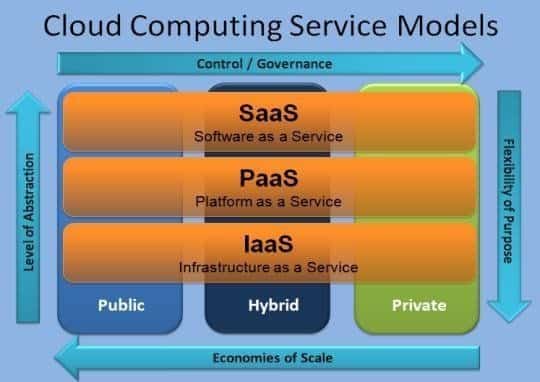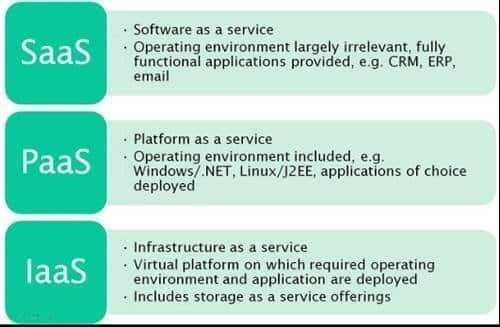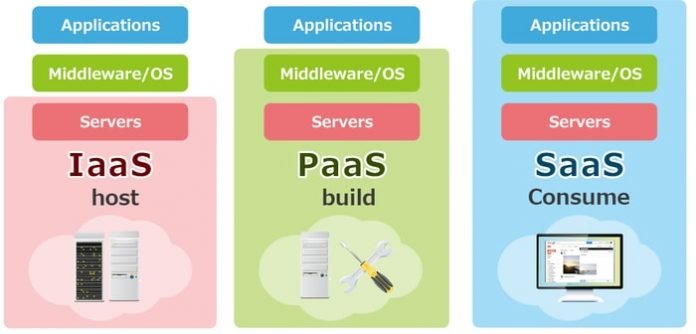Do you use IaaS, PaaS, and SaaS Cloud computing technology in your life? Your answer will be yes. People consider the modern era as the digital ecosystem. In this virtual arena, you must make a habit of cloud computing.
In our day-to-day life, we are using cloud computing services and cloud storage. It has both advantages and disadvantages. Many successful vendors are providing cloud hosting services.
This article aims to provide the readers with an idea regarding cloud, cloud computing, cloud computing services, cloud computing types, advantages, and disadvantages.
What is Cloud Computing Technology?
The word Cloud denotes a Network or the Internet. In other words, we can tell that Cloud is somewhat, which is present at an isolated location. Cloud can offer services over the network such as public networks or private networks like WAN, LAN, or VPN.

Uses such as customer relationship management (CRM), e-mail, web conferencing all run in the cloud. The main service model of cloud computing is IaaS PaaS SaaS.
What is Cloud Computing?
Cloud computing is a model for enabling the network available everywhere to make it convenient, on-demand network access, and share a pool of configurable computing resources. Cloud computing consists of networks, servers, storage, application, and services.
The main feature is its swift provision with minimal management effort. It is a high level of storage model, service model, and deployment models. Cloud computing provides a service of data storage from which it can be used from anywhere.
Some cloud computing service is Amazon Web Services, Microsoft Azure, Google Cloud Platform, Adobe, VMware, IBM Cloud, Rackspace, Red Hat, Salesforce, Oracle Cloud, SAP, Verizon Cloud, Navisite, Dropbox, Egnyte.
Essential Characteristics of IaaS, PaaS, and SaaS
There are four characteristics of cloud computing which are mentioned below:

-
Cloud computing On-Demand Self Service
A user can separately provision computing abilities spontaneously without requiring human contact with each cloud computing service provider.
-
Cloud computing Heterogeneous Access
Abilities are offered over the network and accessed through standard appliances that promote heterogeneous thin or thick client platforms.
-
Cloud computing Resource Pooling
The provider’s computing properties are pooled to serve many consumers using a multi-tenant model. Different physical and virtual properties are enthusiastically assigned and reassigned, conferring to consumer demand.
-
Cloud computing Measured Service
Cloud systems spontaneously control and optimize resources used by leveraging a metering competency at some level of abstraction proper to the type of service. This type of cloud computing will provide an analyzable and anticipated computing platform.
IaaS PaaS SaaS in Cloud Computing
-
Cloud computing “Software as a Service” (SaaS)
- The ability provided to the user is to use the provider’s applications running on a cloud infrastructure.
- The applications are manageable from various client devices such as a web browser (e.g., web-based email).
- The consumer does not accomplish or control the underlying cloud setup, including network, servers, operating systems, storage.
- Examples: Google Apps, Caspio, Salesforce, Nivio, Learn.com.
-
Cloud Computing “Platform as a Service” (PaaS)
- The ability provided to the consumer is to deploy onto the cloud setup consumer-created or acquired applications created using programming languages and processes supported by the provider.
- The user does not manage or control the underlying cloud setup.
- The user has control over the installed applications and possibly application hosting environment configurations.
- Examples: Windows Azure, Google App.
-
Cloud computing “Infrastructure as a Service” (IaaS)
- The ability provided to the user is to provision processing, storage, networks, and other essential computing resources.
- The user can deploy and run arbitrary software, which can contain operating systems and applications.
- The user does not manage or control the primary cloud setup but controls operating systems, storage, installed applications, and possibly limited control of select networking modules (e.g., host firewalls).
- Examples: Rackspace Cloud Servers, Amazon EC2, GoGrid, and Relia Cloud.
Deployment Models of IaaS PaaS SaaS
- Private Cloud computing
- The cloud works exclusively for an organization. It may be managed by the business or a third party and may occur on-premise or off-premise.
- Community Cloud computing
- The cloud computing setup is shared by several organizations and supports a specific community that has shared concerns.
- It may be managed by the company or a third party and may exist on-premise or off-premise
- Public Cloud computing
- The cloud setup may be obtainable to the general public or a large industry group, and it is owned by a company selling cloud services.
- Hybrid cloud computing
- The cloud setup is an arrangement of two or more clouds (private, community, or public).
Advantages of IaaS PaaS SaaS
- Lower computer costs: In Cloud computing, all the data is preserved in an isolated place, and from anywhere it can be used, so it reduces the hardware cost.
- Improved performance: If data is available from everywhere, then performance will be simply up.
- Reduced software costs: Because of its SaaS facility, software cost has been reduced at a large scale.
- Instant software updates: The system is hosted into a cloud server for cloud computing applications, then it is not required to update all computers. A single update is enough for everyone.
The other advantages are Improved document format compatibility, Unlimited storage capacity, Increased data reliability, Universal document access, Latest version availability, Easier group collaboration, Device independence.
Disadvantages
- Requires a constant Internet connection: The major problem of cloud computing is it needs the internet. Without an internet connection, cloud computing is valueless.
- It does not work well with low-speed connections: If the volume of data is high, then internet speed requires high. Otherwise, the system will be slow.
- Features might be limited: The elements of cloud hosting depend on the service provider. The right cloud computing service provider will provide more features.
- Can be slow: Cloud computing can be quiet for various reasons like the device is not updated, backdated software, low-speed internet connection, and volume of data.
- Stored data can be lost: Data may suffer for its own or vendors’ fault in cloud computing.
- Stored data might not be secure: It maybe not secure if bad person attacks.
Final Thought
Cloud Computing offers us a way by which we can access the applications as utilities over the Internet. It permits us to produce, configure, and customize applications online. With the Cloud Computing platform, the users can access database resources via the internet from any place for as long as they need without upsetting about any maintenance or management of natural resources.





